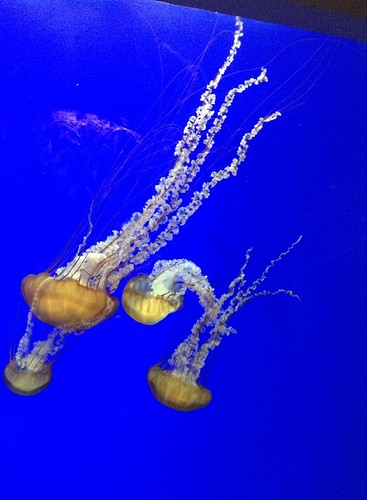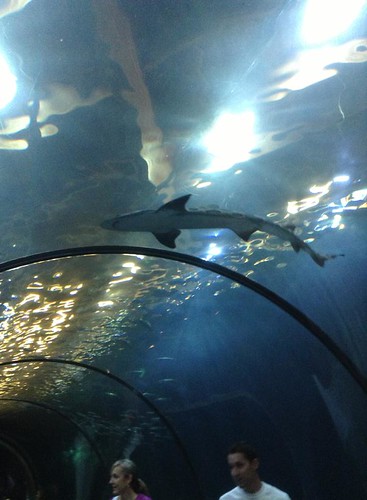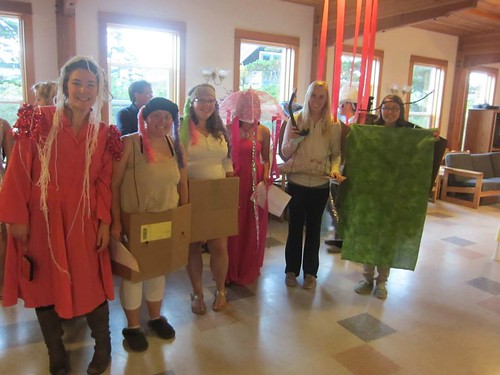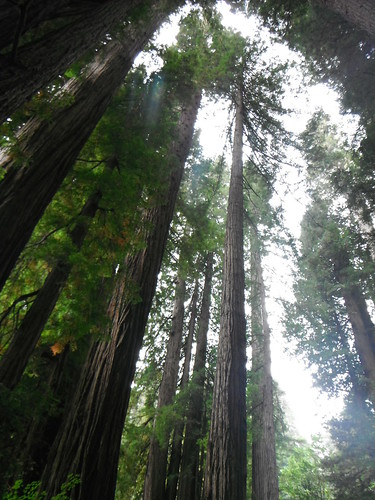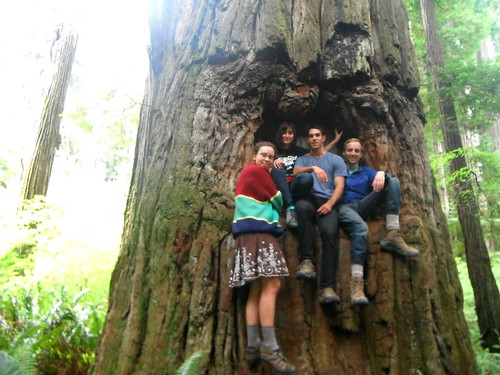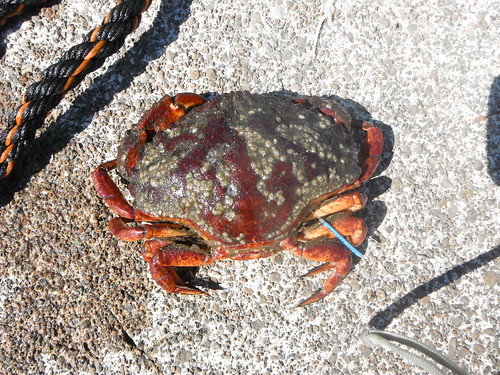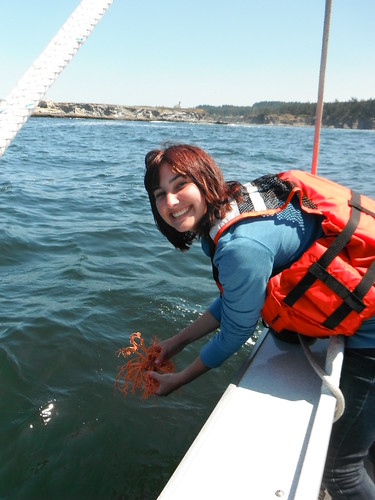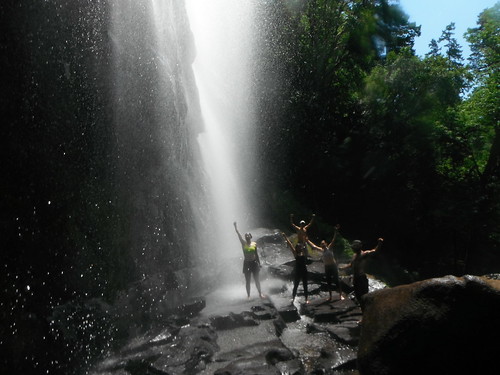Yet again, another fantastic week in Oregon! I say Oregon, instead of just Charleston, because this week was full of traveling! As per usual, we are still continuing our work with the annual red rock crab mark-recapture project. This, and working on our pink shrimp fishery project, took up the majority of our Monday. Tuesday through Thursday, however, was a totally unique experience!
Steve Rumrill, the managing shellfish biologist of Newport and former professor at the University of Oregon, had earlier in the month invited me to join him in Astoria to help the Astoria shellfish biologist, Matt Hunter, with his razor clam stock assessment. And so, Tuesday morning I set out on Highway 101 to Astoria. Driving up the 101 was like driving through a postcard: ocean view from the top of cliff faces and lush forests. It was a long drive (eight and a half hours because traffic was terrible!) but it didn’t feel that way one bit because of the beautiful scenery!
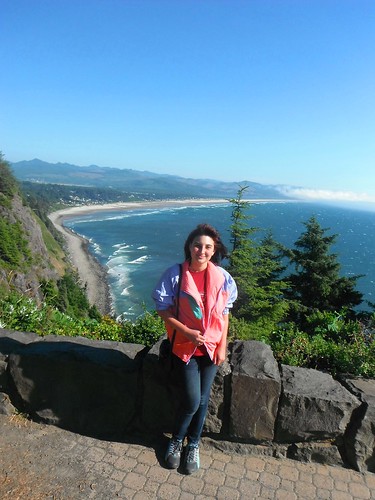
Driving Highway 101 is simply a dream.
Wednesday and Thursday mornings were dedicated entirely to razor clam surveying. On Wednesday we headed out early—5:30am—to the transect site in Warrenton. The reasoning behind the early times is to ensure we are working as the tide is going out, in order to sample a larger portion of the beach and the razor clam stock.
Surveying razor clams is quite different from surveying cockles. We took an approximately meter sized basket and placed it along different elevations on the beach. We started at elevation zero—which is determined as the elevation in which no razor clams are found—so that we could ensure that we were not missing any clams higher up on the beach. We then moved down the beach, towards the water, in 50 meter increments.
At each elevation the basket is placed and a hydraulic pump is used to liquefy the sand. Razor clams are neutral buoyant and if they are within our sampling area (the basket), once the area liquefies, razor clams will float to the top. We pump water into the area for three minutes per basket, six times per elevation. The baskets, depending on the elevation, are moved either north or south to ensure we are sampling as much of the stock as possible.
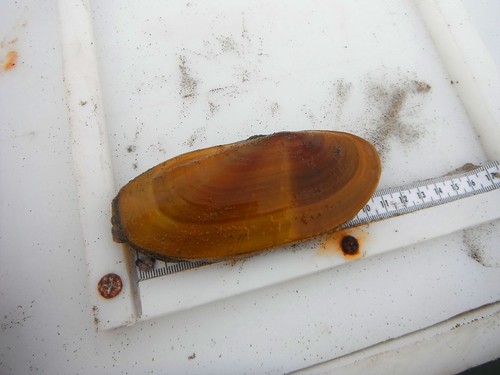
An excellent razor clam specimen we retrieved during our stock assessment.
(Note: Clam measures to approximately 110mm.)
The hydraulic aspect of the sampling is quite interesting. A pump is placed in a “crab hole”—an area of pooling water on the beach—and a gasoline powered generator is used to power the pump. A hose sucks up the water from the crab hole and then pushes the water into a separate, longer hose which is attached to a wand at the end. The wand is made of PVC pipe with two openings: one to connect to the hose and one to project the water. This wand is used to liquefy the sand in the basket. The water comes out of the wand at nearly 8 gallons a minute and handling the wand can be tricky to maneuver, not to mention heavy. As with many things involving field work, there is a definite learning curve for good technique.
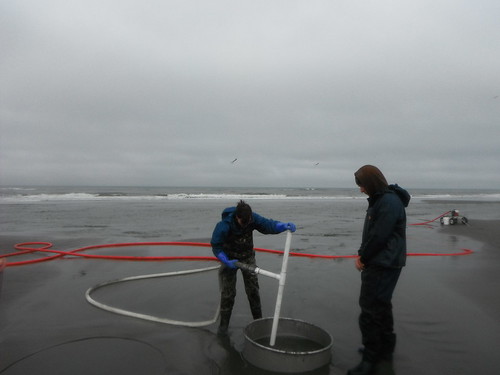
Blasting away at the sand, looking for razor clams.
The same process of razor clam surveying was repeated on Thursday at a gracious 6:00a.m. After finishing up with the stock assessment—and a yummy breakfast at Bagels by the Sea—I headed back to Charleston. Luckily, traffic was substantially better this time around and I made it home in just a little over 5 hours. After being up so early and having such a long drive you can bet I was ready for a good night’s sleep!
Friday, Scott and I headed out in the morning to Valino Island to recover cockles that had been marked and placed there in February. We wanted to retrieve as many as possible in order to meaningfully assess the cockles’ growth over time. Fortunately, we managed to find 33; approximately 100 were placed but only 30 are needed for meaningful statistical analysis. The cockles that we found had some cool annuli (growth rings) and crunching the data is going to yield some fascinating results that I will be sure to update you all on!
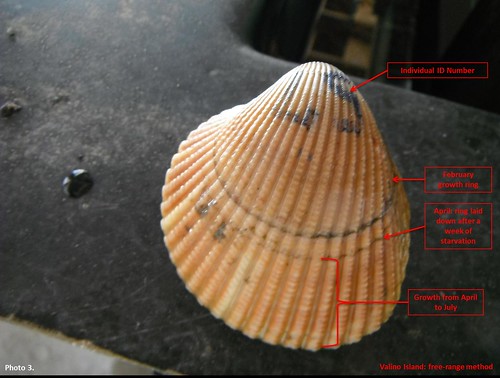
A cockle we recovered with some fascinating annuli!
Friday was also the day that Scott decided it’d be a good time to teach me how to back up a boat trailer. If you’ve ever watched somebody experienced in this matter back up a boat trailer you may have been deceived into thinking that it is a simple and easy task. You would be very wrong, as was I. Backing up a boat trailer requires an immense amount of directional multitasking. In order to successfully back up a boat trailer you must keep in mind that the truck and the boat are always going to be pushing and pulling in opposite directions and keeping track of what does what can be very dizzying. The boat docks are always filled with tons of seasoned boaters; no pressure when you have 50 professionals watching you, right? I didn’t do terribly and it’s all about practicing. I wouldn’t call me for all your trailering needs just yet.
It was nice to have some time to relax and catch up on rest this weekend after such a long, busy week. Of course, my idea of relaxation always seems to involve being active. This week my newest experience was slack lining. The concept of a slack line is quite simple: Tie said slack line in between two trees and try to keep your balance. The actuality of slack lining is quite difficult and there is a lot of falling off involved. Let’s just say you will learn how to fall with grace and not on your face. When walking on a slack line it is important to look straight ahead and not at your feet. Doing this, keeping a good center of gravity and a lot of practice and you’ll be a pro in no time; or you at least won’t be falling off as much!
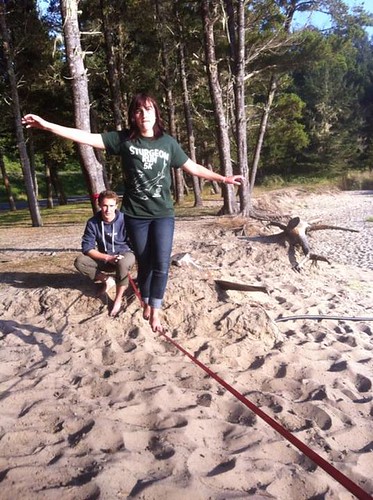
The face of utter concentration.
Sunday was also particularly eventful. A few good friends of mine from OIMB—Theresa and Payton— and I spent the day laying out at Sunset Bay and playing some beach volleyball. In the evening the three of us asked one of the COSEE interns staying at OIMB, Zac, for some skim boarding lessons and he was happy to oblige. Though I had skim boarded before I was by no means an expert on the subject; as you can imagine there isn’t an abundance of surf in Indiana. However, we all picked up on it pretty quickly and had a ton of fun. Definitely a hobby I wish I could take back to Indiana with me, but all the more reason to revisit the coasts!

Skim boarding at Sunset Bay!
After such an exciting week, I’m interested to see where these final following weeks take me. Stay tuned, until next time!














